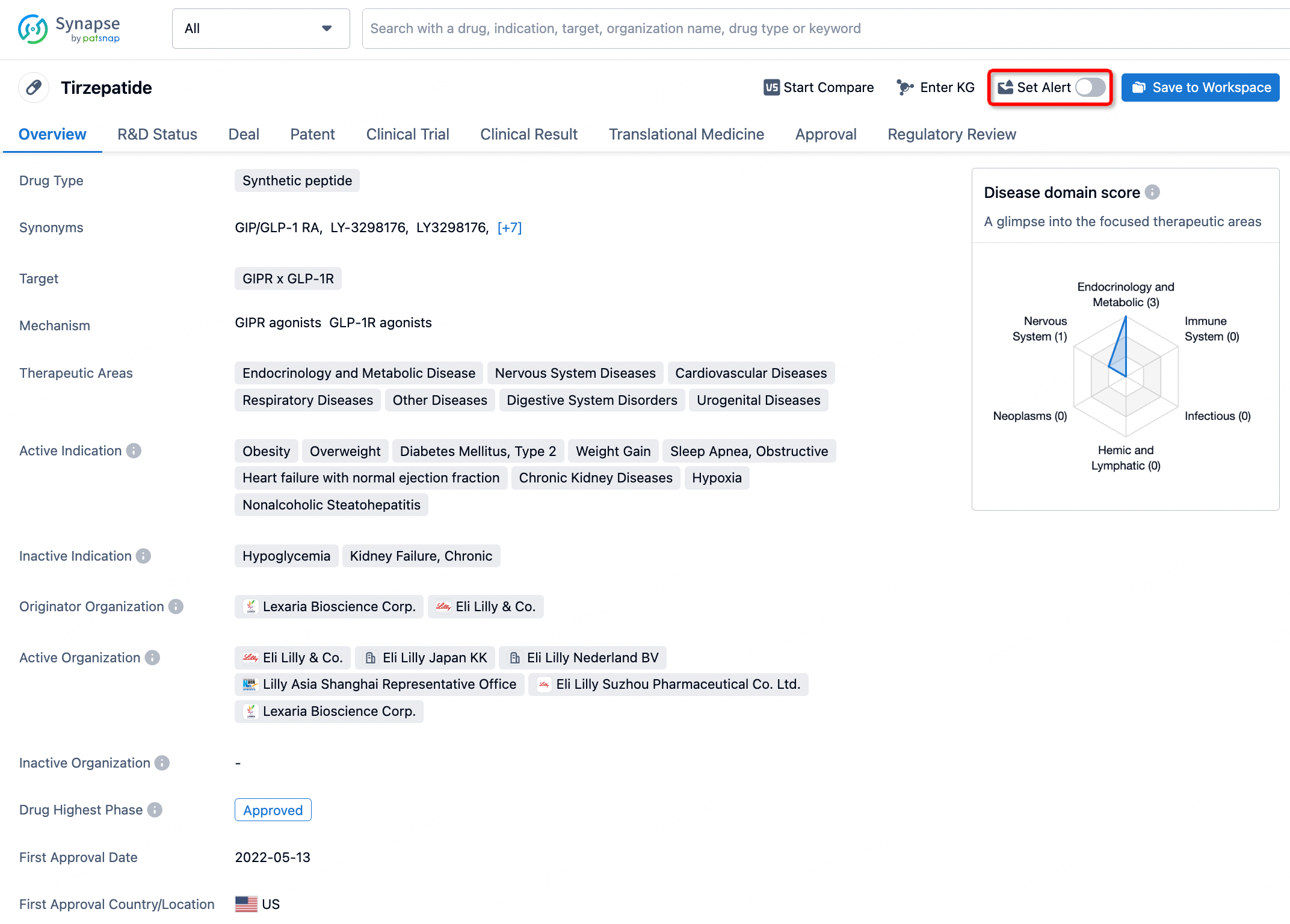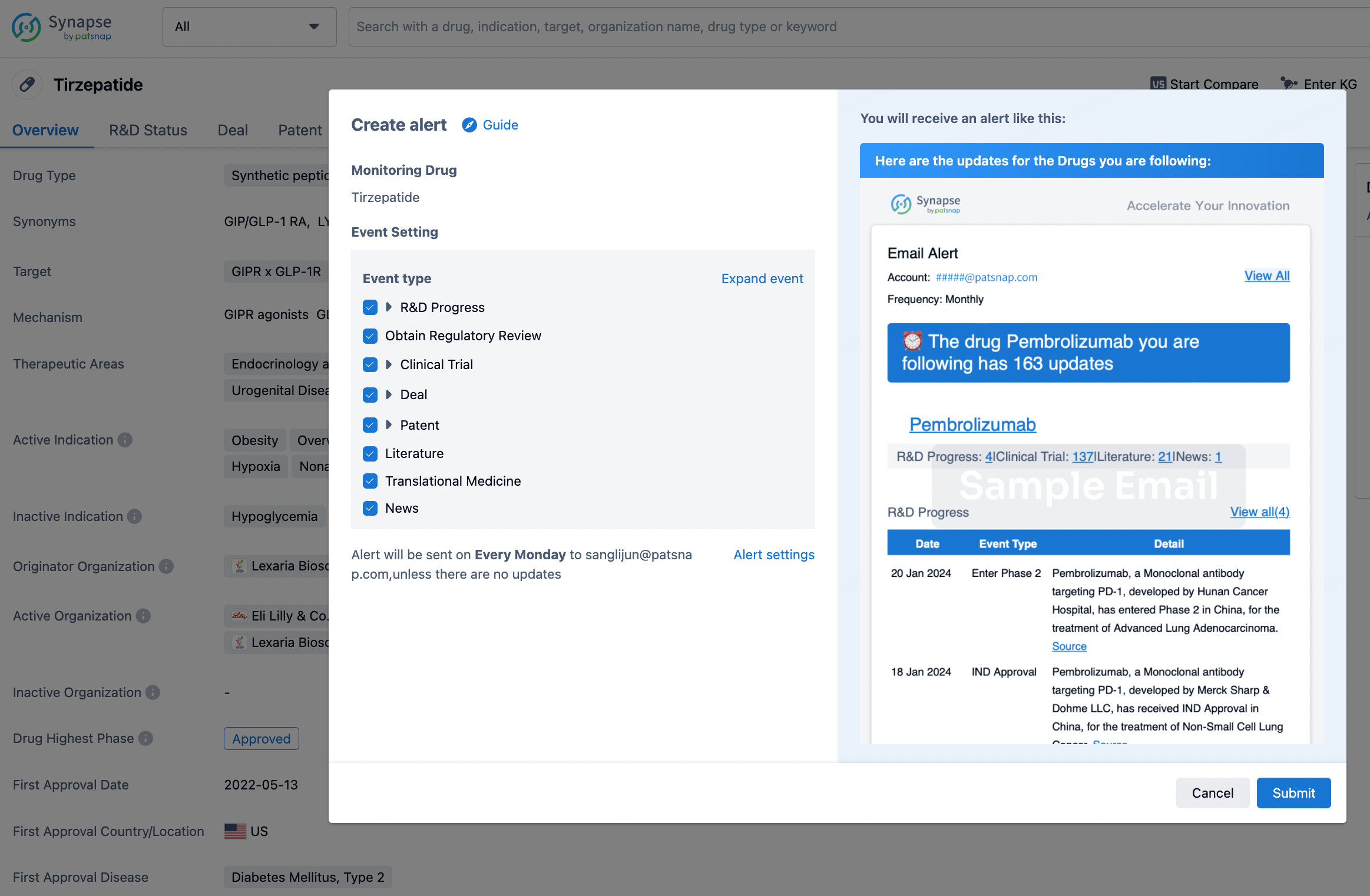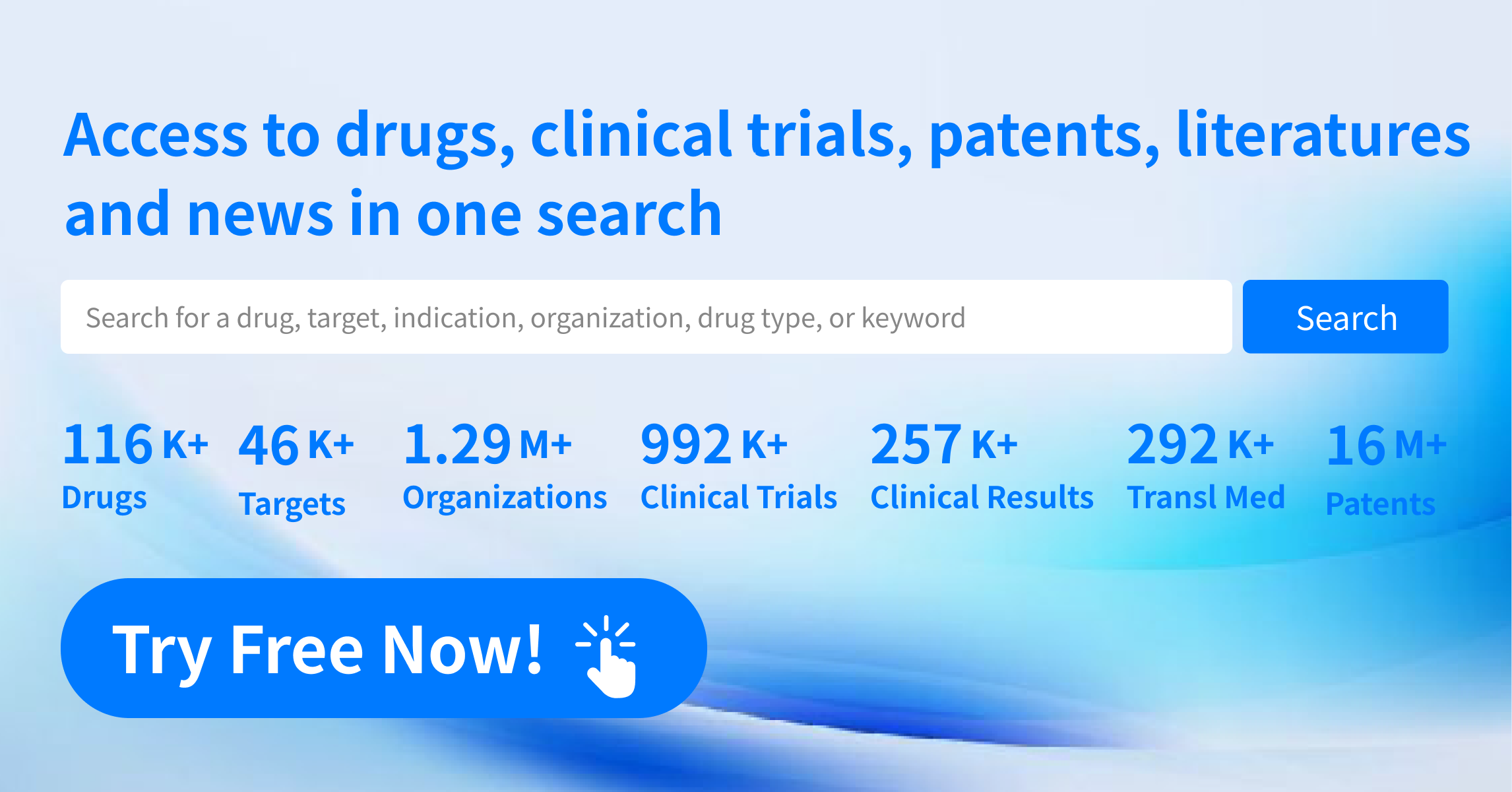Request Demo
What is Sparfloxacin used for?
14 June 2024
Sparfloxacin is a synthetic broad-spectrum antibiotic belonging to the class of fluoroquinolones. Known commercially under various trade names such as Zagam, this drug is typically used to treat bacterial infections, particularly those affecting the respiratory tract. Initially developed by the pharmaceutical company Dainippon Sumitomo Pharma, it has been researched extensively for its efficacy in combating various bacterial pathogens. Sparfloxacin is indicated for the treatment of conditions like acute bacterial exacerbation of chronic bronchitis, community-acquired pneumonia, sinusitis, and other infections where gram-positive and gram-negative bacteria are implicated. The drug has garnered attention in medical research for its strong antibacterial properties and its potential use against strains resistant to other antibiotics. Despite its promise, the development and use of Sparfloxacin have been accompanied by careful scrutiny due to its side effects and contraindications.
Sparfloxacin's mechanism of action is fundamentally tied to its ability to inhibit bacterial DNA gyrase and topoisomerase IV. These enzymes are crucial for bacterial DNA replication, transcription, repair, and recombination. By binding to these enzymes, Sparfloxacin disrupts the supercoiling of bacterial DNA, thereby preventing the bacteria from multiplying and repairing themselves. This inhibition ultimately results in bacterial cell death, making Sparfloxacin effective against a wide range of bacterial species. Its broad-spectrum activity covers many gram-positive and gram-negative bacteria, including strains of Streptococcus pneumoniae, Haemophilus influenzae, and Mycoplasma pneumoniae. The specificity with which Sparfloxacin targets these bacterial enzymes contributes significantly to its antibacterial efficacy, although it also underscores the importance of using the drug judiciously to avoid the development of antibiotic resistance.
Sparfloxacin is typically administered orally in the form of tablets. The usual dosage involves an initial loading dose, followed by maintenance doses as prescribed by a healthcare provider. For instance, a common regimen might involve a loading dose of 400 mg on the first day, followed by 200 mg once daily. The onset of action is relatively quick, with therapeutic concentrations being achieved within 1-3 hours of ingestion. It is crucial to adhere to the prescribed dosage and duration of treatment to ensure the effectiveness of the therapy and to prevent the development of resistant bacterial strains. Patients are generally advised to take Sparfloxacin with a full glass of water and to avoid taking it concurrently with dairy products or calcium-fortified juices, as calcium can interfere with the absorption of the drug. Furthermore, it is recommended to avoid exposure to excessive sunlight or UV light while undergoing treatment with Sparfloxacin, as the drug can increase photosensitivity, leading to an elevated risk of sunburn.
While Sparfloxacin is effective in treating various bacterial infections, it is not without its side effects. Common side effects include gastrointestinal disturbances such as nausea, vomiting, diarrhea, and abdominal pain. Some patients may also experience central nervous system effects like headache, dizziness, and insomnia. A more severe but less common side effect is photosensitivity, which can lead to severe sunburns even with minimal sun exposure. Due to the risk of serious adverse effects, Sparfloxacin carries contraindications for certain populations. It is not recommended for use in individuals with a history of hypersensitivity to fluoroquinolones or those with a known history of tendon disorders related to quinolone use. Additionally, Sparfloxacin should be used with caution in patients with renal impairment, as the drug is primarily excreted through the kidneys. Pregnant and breastfeeding women are generally advised to avoid using this antibiotic due to potential risks to the fetus and infant. Given these considerations, it is essential for healthcare providers to thoroughly evaluate the patient's medical history and current condition before prescribing Sparfloxacin.
The efficacy and safety of Sparfloxacin can also be influenced by interactions with other drugs. For instance, concurrent use of antacids containing magnesium or aluminum, as well as supplements containing iron or zinc, can significantly reduce the absorption of Sparfloxacin, rendering it less effective. Patients are usually advised to take Sparfloxacin either 2 hours before or 4 hours after such substances to minimize interaction. Additionally, nonsteroidal anti-inflammatory drugs (NSAIDs) taken alongside Sparfloxacin can increase the risk of central nervous system stimulation and convulsions. The concomitant use of Sparfloxacin with certain antiarrhythmic drugs can result in additive effects on the QT interval, potentially leading to severe cardiac arrhythmias. Drugs such as amiodarone, procainamide, and sotalol should, therefore, be used with caution when a patient is undergoing treatment with Sparfloxacin. Given these potential interactions, it is imperative that patients disclose all medications, supplements, and over-the-counter drugs they are taking to their healthcare provider to ensure safe and effective use of Sparfloxacin.
In summary, Sparfloxacin represents a potent antibiotic option within the fluoroquinolone class, suitable for treating a variety of bacterial infections, particularly those of the respiratory tract. Its mechanism of action, involving the inhibition of crucial bacterial enzymes, underpins its broad-spectrum efficacy. However, the potential for significant side effects and interactions with other drugs necessitates careful patient evaluation and adherence to prescribed guidelines. By understanding the nuances of Sparfloxacin's use, healthcare providers can better harness its therapeutic benefits while mitigating risks, ultimately contributing to more effective and safer patient care.
Sparfloxacin's mechanism of action is fundamentally tied to its ability to inhibit bacterial DNA gyrase and topoisomerase IV. These enzymes are crucial for bacterial DNA replication, transcription, repair, and recombination. By binding to these enzymes, Sparfloxacin disrupts the supercoiling of bacterial DNA, thereby preventing the bacteria from multiplying and repairing themselves. This inhibition ultimately results in bacterial cell death, making Sparfloxacin effective against a wide range of bacterial species. Its broad-spectrum activity covers many gram-positive and gram-negative bacteria, including strains of Streptococcus pneumoniae, Haemophilus influenzae, and Mycoplasma pneumoniae. The specificity with which Sparfloxacin targets these bacterial enzymes contributes significantly to its antibacterial efficacy, although it also underscores the importance of using the drug judiciously to avoid the development of antibiotic resistance.
Sparfloxacin is typically administered orally in the form of tablets. The usual dosage involves an initial loading dose, followed by maintenance doses as prescribed by a healthcare provider. For instance, a common regimen might involve a loading dose of 400 mg on the first day, followed by 200 mg once daily. The onset of action is relatively quick, with therapeutic concentrations being achieved within 1-3 hours of ingestion. It is crucial to adhere to the prescribed dosage and duration of treatment to ensure the effectiveness of the therapy and to prevent the development of resistant bacterial strains. Patients are generally advised to take Sparfloxacin with a full glass of water and to avoid taking it concurrently with dairy products or calcium-fortified juices, as calcium can interfere with the absorption of the drug. Furthermore, it is recommended to avoid exposure to excessive sunlight or UV light while undergoing treatment with Sparfloxacin, as the drug can increase photosensitivity, leading to an elevated risk of sunburn.
While Sparfloxacin is effective in treating various bacterial infections, it is not without its side effects. Common side effects include gastrointestinal disturbances such as nausea, vomiting, diarrhea, and abdominal pain. Some patients may also experience central nervous system effects like headache, dizziness, and insomnia. A more severe but less common side effect is photosensitivity, which can lead to severe sunburns even with minimal sun exposure. Due to the risk of serious adverse effects, Sparfloxacin carries contraindications for certain populations. It is not recommended for use in individuals with a history of hypersensitivity to fluoroquinolones or those with a known history of tendon disorders related to quinolone use. Additionally, Sparfloxacin should be used with caution in patients with renal impairment, as the drug is primarily excreted through the kidneys. Pregnant and breastfeeding women are generally advised to avoid using this antibiotic due to potential risks to the fetus and infant. Given these considerations, it is essential for healthcare providers to thoroughly evaluate the patient's medical history and current condition before prescribing Sparfloxacin.
The efficacy and safety of Sparfloxacin can also be influenced by interactions with other drugs. For instance, concurrent use of antacids containing magnesium or aluminum, as well as supplements containing iron or zinc, can significantly reduce the absorption of Sparfloxacin, rendering it less effective. Patients are usually advised to take Sparfloxacin either 2 hours before or 4 hours after such substances to minimize interaction. Additionally, nonsteroidal anti-inflammatory drugs (NSAIDs) taken alongside Sparfloxacin can increase the risk of central nervous system stimulation and convulsions. The concomitant use of Sparfloxacin with certain antiarrhythmic drugs can result in additive effects on the QT interval, potentially leading to severe cardiac arrhythmias. Drugs such as amiodarone, procainamide, and sotalol should, therefore, be used with caution when a patient is undergoing treatment with Sparfloxacin. Given these potential interactions, it is imperative that patients disclose all medications, supplements, and over-the-counter drugs they are taking to their healthcare provider to ensure safe and effective use of Sparfloxacin.
In summary, Sparfloxacin represents a potent antibiotic option within the fluoroquinolone class, suitable for treating a variety of bacterial infections, particularly those of the respiratory tract. Its mechanism of action, involving the inhibition of crucial bacterial enzymes, underpins its broad-spectrum efficacy. However, the potential for significant side effects and interactions with other drugs necessitates careful patient evaluation and adherence to prescribed guidelines. By understanding the nuances of Sparfloxacin's use, healthcare providers can better harness its therapeutic benefits while mitigating risks, ultimately contributing to more effective and safer patient care.
How to obtain the latest development progress of all drugs?
In the Synapse database, you can stay updated on the latest research and development advances of all drugs. This service is accessible anytime and anywhere, with updates available daily or weekly. Use the "Set Alert" function to stay informed. Click on the image below to embark on a brand new journey of drug discovery!
AI Agents Built for Biopharma Breakthroughs
Accelerate discovery. Empower decisions. Transform outcomes.
Get started for free today!
Accelerate Strategic R&D decision making with Synapse, PatSnap’s AI-powered Connected Innovation Intelligence Platform Built for Life Sciences Professionals.
Start your data trial now!
Synapse data is also accessible to external entities via APIs or data packages. Empower better decisions with the latest in pharmaceutical intelligence.


